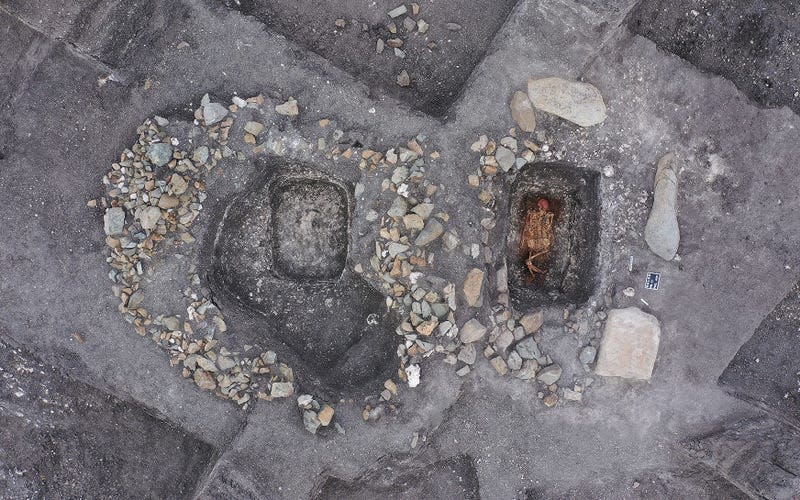5,000-Year-Old Remains Might Be Oldest-Known Horseback Riders

Researchers interrogating the skeletal remains in kurgans—5,000-year-old burial mounds—found evidence that some of the Neolithic people were riding horses.
The findings fill in a gap in two fundamental timestamps of humankind’s relationship to horses: the first evidence of horse domestication (around 5,500 years ago) and the first horse-drawn chariots (4,000 years ago). The research is published today in Science Advances.
Read more
These Winning Close-Up Photos Show Life That's Often Overlooked
Remembering Enterprise: The Test Shuttle That Never Flew to Space
A team of archaeologists and bioanthropologists offer the first scientific analysis of the remains of five Yamnaya people, found at sites in Romania, Bulgaria, and Hungary. The Yamnaya were a group of steppe pastoralists who lived in the areas north of the Black and Caspian Seas during the Neolithic period. The researchers also looked at over 200 previously studied skeletons from 39 sites across southeastern Europe.
They found that the five Yamnaya skeletons—along with 19 others from the larger sample—showed signs of horseback riding, including specific muscle attachment sites in the legs, changes in the shape of the hip sockets, degradation of the vertebrae from regular up-and-down movements, and some trauma indicative of falls, kicks, or bites from horses.
“They do not display any deformations, only slight stress adaptations and minor degenerative joint afflictions,” said Martin Trautmann, a bioanthropologist at the University of Helsinki and the study’s lead author, in an email to Gizmodo. “In total, Yamnaya people show an overall exceptionally good health status.”
Trautmann added that these physiological signs of horseback riding—musculoskeletal strain and joint degeneration—would not have caused the individuals to look particularly different in life (similarly, you can’t really tell a cowboy from someone who’s not based just on how they walk.)
Past research on horse remains in southeastern Europe gives an indication of the kind of animal these ancient humans were riding. “They were of course closer to the now-extinct wild horse type, which looked similar to Przewalski horses—so, medium small, stocky, with broad chests and thick necks,” Trautmann said. That puts them in the same wheelhouse as medieval pony-sized warhorses from Europe.
Because riding-associated paraphernalia is made of perishable materials such as wooden bits or fiber-based rope, looking at human remains for signs of riding can be more productive than looking at horse remains or for material culture associated with horses, the researchers wrote.
One individual showed the oldest evidence of riding: a 6,300-year-old skeleton from Hungary. That individual “surprisingly showed four of the six riding pathologies, possibly indicating riding a millennium earlier than Yamnaya,” said David Anthony, an anthropologist at Hartwick College and Harvard University, in a University of Helsinki release.
“An isolated case cannot support a firm conclusion, but in Neolithic cemeteries of this era in the steppes, horse remains were occasionally placed in human graves with those of cattle and sheep, and stone maces were carved into the shape of horse heads,” Anthony added.
A sweeping suite of studies published last year outlined 10,000 years of human history through genetic admixture, including how the Yamnaya culture spread into the Southern Arc, the region that connects southeastern Europe with West Asia. Yamnaya DNA is also present in the ancient people of the Junggar Basin, in northwest China. Adding horses into the story of the Yamnaya culture and its distribution may help explain human migration in the Neolithic.
DNA-based approaches to studying horse domestication help us understand how modern wild horses derive from ancient ones. But it’s also useful to look at horses in the human archaeological record—and can reveal fascinating details, like how some horses were buried alive with Iron Age humans.
More: Oldest Known Human-Bred Hybrid Animal Was a ‘Kunga’
More from Gizmodo
Sign up for Gizmodo's Newsletter. For the latest news, Facebook, Twitter and Instagram.

 Yahoo News
Yahoo News 